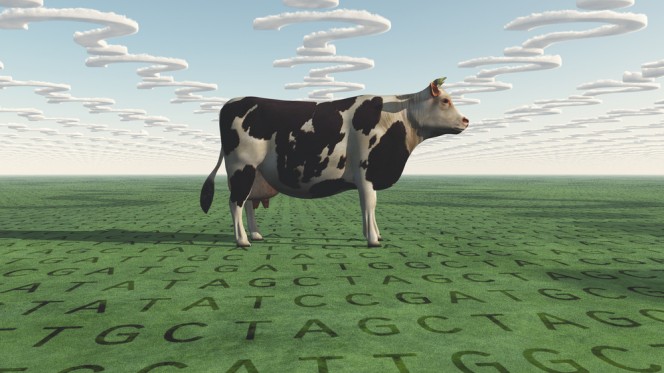



Article by: Hari Yellina
Les and Jenny Stewart of Victoria were able to achieve their goal of increasing production by using genomic testing and investing in proven high-performance genetics. At Allanjay Holsteins in Newbridge, 30 kilometres west of Bendigo, the Stewarts milk 250 registered Holsteins. Each year, some 140 hectares of perennial pastures and seasonal fodder crops are irrigated for the milking herd, with another 120 hectares of dryland and another 300 hectares of leased land used for growing young stock and producing hay and silage. In 2015, the Stewarts were able to expand their herd and make use of their ability to produce a large amount of high-quality fodder thanks to the addition of a new 16-a-side rapid-exit dairy. Since then, the family has set new goals, focused on genetics, to boost total farm production and profitability.
Their milking herd has grown from 150 to 250 cows by 2020, with overall farm output increasing 60% between 1.15 million litres in 2015 to 1.85 million litres in the season ending June 2021. Their yearly milk solids’ production, per cow, increased by 11%. The values rose from 558 to 622 kilos. The Stewarts’ approach was based on guidance from nutritionists, reproductive specialists (via Murray Dairy), and their local veterinarians, as well as guidelines from Dairy Australia’s ‘InCalf’ guidebook. They had an aged herd with low fertility and low cell counts at the time. “We wanted to increase the size of our herd, so we looked into ways to improve conception rates and our heifer management programme,” Jenny explained.
With conception rates below 40%, their initial course of action was to cull older cows intensively. The profits were subsequently re-invested in younger genetics, with genomic data being used in the selection process. Jenny explained, “We were looking for young cows to replace the old ones we were culling.” “We wanted something better than what we already had; buying cows is pointless if you already have something similar.” She needed a mix of rich pedigrees and excellent genetic values, as well as a foundation of production and type. “I prefer data over opinion,” she explained. “A pedigree with more generations has more data. More data implies more trustworthiness, and genomics only adds to the concreteness of the situation.”
Les established a minimum aim of Balanced Performance Index (BPI) +200 when choosing cows to buy. “We discovered that the (genomic) results provided a fairly accurate picture of a cow’s potential,” he explained. “The high BPI cows always seem to have a strong desire to work.” The Stewarts obtained bloodlines from two of the country’s finest herds: Steve and Jackie Mills’ Jet Star herd and Stewart and Nita McRae’s Gallrae Holsteins. “We look at their BPI and ABV [Australian Breeding Value] split, as well as their PI [Production Index] and classification ratings” when buying cows, according to Les. “Jet Star and Gallrae have some extremely good cow families – cows with high BPIs and 10 generations or more of type and production data.” They chose members from the Alice, Dora, Lola (Lucky), Oriental, and Chartreuse lineages at the Jet Star dispersal and Harvest at Gallrae Select Sale. They have just introduced high-ranking Roxy and Shimmer line members to their herd.